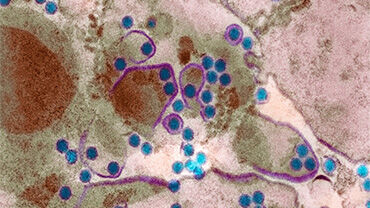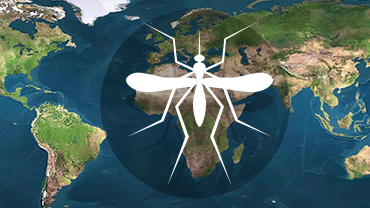Dengue worldwide overview
Situation update, June 2024
Since the beginning of 2024, over 10 million dengue cases and over 5 000 dengue-related deaths have been reported from 80 countries/territories.
In mainland Europe, imported cases from endemic areas have been reported in 2024 (e.g., in Germany, Italy and France) but no autochthonous cases have been reported so far.
Most cases globally have been reported from the WHO PAHO region.
Three-month dengue virus disease case notification rate per 100 000 population, March–May 2024

Overview
Dengue
Since the beginning of 2024, over 10 million dengue cases and over 5 000 dengue-related deaths have been reported from 80 countries/territories. Most cases globally have been reported from the WHO PAHO region. The over nine million cases reported by PAHO in 2024 are twice the number of cases reported throughout 2023. In the region, Brazil has reported most cases in 2024 (over eight million) followed by Argentina, Paraguay, Peru and Colombia (source: Epidemiological Update - Increase in dengue cases in the Region of the Americas - 18 June 2024 - PAHO/WHO | Pan American Health Organization).
In mainland Europe, imported cases from endemic areas have been reported in 2024 (e.g., in Germany, Italy and France) but no autochthonous cases have been reported so far.
Guadeloupe, Martinique continue facing an epidemic classified as in phase 4 and level 1 but a decreasing trend in cases (those presenting with dengue symptoms) continues being reported the past month (mid-May to mid-June). In Saint-Martin dengue circulation continues but at lower levels with sporadic cases reported. (Bulletin de surveillance de la dengue - point épidémiologique régional du 13 juin 2024.pdf (guadeloupe.gouv.fr)) French Guyana, cases have been decreasing the past weeks after a peak in January 2024.
Overall, 1 180 cases of dengue have been reported in La Reunion until 16 June 2024, according to the Epidemiological Bulletin published on 16 June 2024. Dengue circulation is at higher levels compared to 2023 and cases have been showing a decreasing trend the last four weeks.
Dengue circulation has been reported also in the South-East Asia and Western Pacific WHO Regions according to reports from the regional offices (SEARO and WPRO, respectively) as well as in Africa in June 2024. According to the SEARO report published on 12 June 2024 , increases in dengue cases were reported in Maldives (total 1 234 cases reported until May 2024), while dengue cases in Bangladesh, Sri Lanka and Thailand are below levels observed the previous years. According to the WPRO Dengue Situation update of 13 June 2024, increases in cases are observed in Vietnam, but the total number of cases reported as of 26 May was lower compared to the total number of cases reported in the same period in 2023, while in Malaysia, which reported increases in cases the previous months, cases are now decreasing, with a cumulative of 62 107 cases reported until week 21 (an increase of 34% compared to the same period in 2023). In Africa, according to the Africa CDC Epidemic Intelligence Report of 22 June 2024, 44 956 dengue cases have been reported this year from Burkina Faso, Cameroon, Cabo Verde, Chad, Ethiopia, Kenya, Mali, Mauritius, Sao Tome and Principe, Senegal, and Sudan.
ECDC assessment:
The Americas is currently facing its largest outbreak of dengue ever. As a result, there is a substantial increase in number of imported cases of dengue to the EU/EEA since the beginning of the year.
The likelihood of onward transmission of dengue and chikungunya virus in mainland EU/EEA is linked to importation of the virus by viraemic travellers into receptive areas with established and active competent vectors (e.g. Aedes albopictus and Aedes aegypti). Aedes albopictus is established in a large part of Europe. In Europe and neighbouring areas, Aedes aegypti is established in Cyprus, on the eastern shores of the Black Sea, and in the outermost region of Madeira.
The current likelihood of the occurrence of local transmission events of chikungunya and dengue viruses in areas where the vectors are present in mainland EU/EEA is high, as the environmental conditions are favourable for vector activity and virus replication in vectors.
All autochthonous outbreaks of CHIKVD and dengue in mainland EU/EEA have so far occurred between June and November.
N.B: The data presented in this report originates from both official public health authorities and nonofficial sources, such as news media. Data completeness depends on the availability of reports from surveillance systems and their accuracy, which varies between countries. All data should be interpreted with caution and comparisons, particularly across countries, avoided, due to underreporting, variations in surveillance system structure, varying case definitions between countries and over time, and use of syndromic definitions.
Map
Countries/territories reporting dengue cases since April 2023, and as of May 2024
Since the beginning of 2024, over 10 million dengue cases and over 5 000 dengue-related deaths have been reported from 80 countries/territories. Most cases globally have been reported from the WHO PAHO region.







